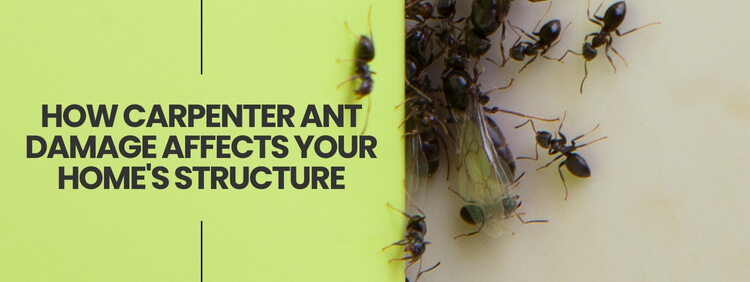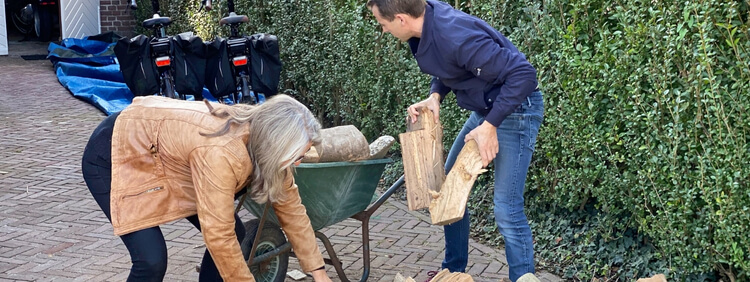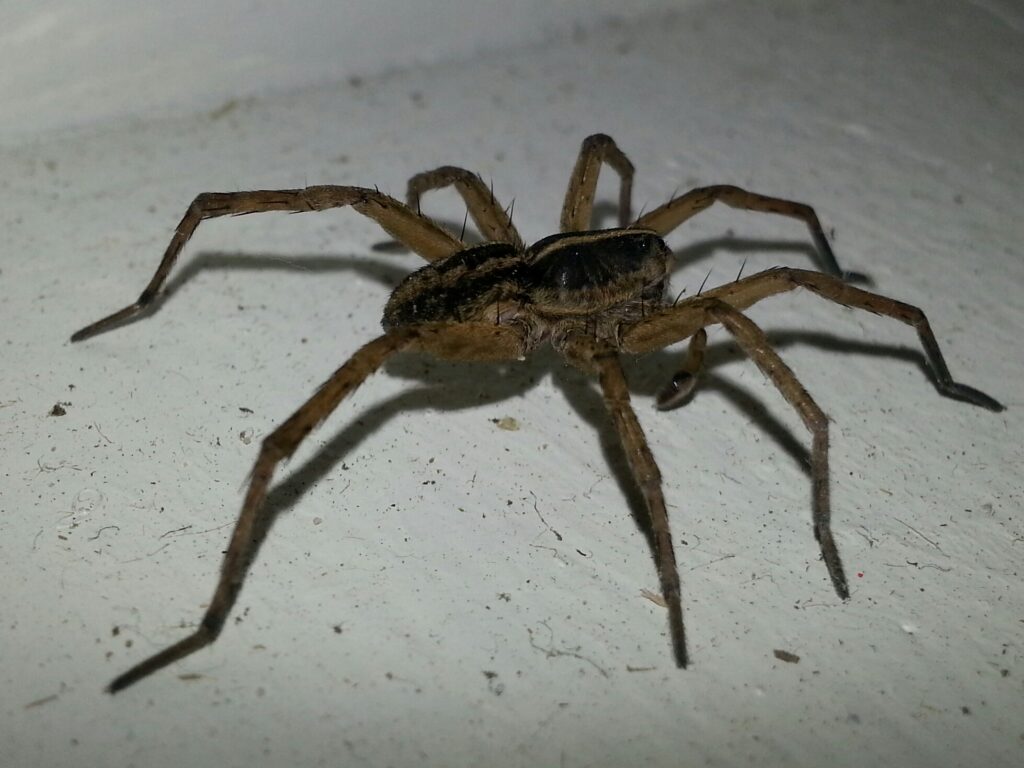 If you are a homeowner dealing with a carpenter ant infestation around your home, this blog is for you. Our technicians are here to provide an informative and engaging guide on the destruction carpenter ants can cause to a house. We've observed firsthand how these tiny, unassuming creatures can bring about significant damage that every homeowner should be aware of.
It's startling to realize that the structural integrity of your home may be compromised by something as small as carpenter ants. But being forewarned is being forearmed.
In this comprehensive guide, we will delve into the signs of a carpenter ant infestation, displaying what carpenter ant damage truly looks like. We'll discuss the potential dangers beyond structural damage that these critters pose, and how you can fortify your home against such invasions. Whether you are currently battling an infestation or are keen on knowing how to spot and prevent one, you've come to the right place.
Fear not; our pest control in Guelph is at your service, ready to provide insights and solutions tailored to every unique situation. We promise to offer a deeper understanding of carpenter ants, their impact on your home's structure, and how an experienced pest control expert is fundamental in winning this battle. Get ready to arm yourself with knowledge and practical prevention tips as we take on this fascinating, albeit damaging, world of carpenter ants together.
If you are a homeowner dealing with a carpenter ant infestation around your home, this blog is for you. Our technicians are here to provide an informative and engaging guide on the destruction carpenter ants can cause to a house. We've observed firsthand how these tiny, unassuming creatures can bring about significant damage that every homeowner should be aware of.
It's startling to realize that the structural integrity of your home may be compromised by something as small as carpenter ants. But being forewarned is being forearmed.
In this comprehensive guide, we will delve into the signs of a carpenter ant infestation, displaying what carpenter ant damage truly looks like. We'll discuss the potential dangers beyond structural damage that these critters pose, and how you can fortify your home against such invasions. Whether you are currently battling an infestation or are keen on knowing how to spot and prevent one, you've come to the right place.
Fear not; our pest control in Guelph is at your service, ready to provide insights and solutions tailored to every unique situation. We promise to offer a deeper understanding of carpenter ants, their impact on your home's structure, and how an experienced pest control expert is fundamental in winning this battle. Get ready to arm yourself with knowledge and practical prevention tips as we take on this fascinating, albeit damaging, world of carpenter ants together.
What are the Common Signs of a Carpenter Ant Infestation in a Home?
Being vigilant about potential threats to your home's structure is crucial. One such threat that every homeowner should be aware of is a carpenter ant infestation. You may wonder what does carpenter ant damage look like? Well, here are some common signs of a carpenter ant infestation:- Frass: Frass, or ant droppings, often resemble sawdust. When disposing of the wood they have tunnelled through, carpenter ants create small piles of frass.
- Rotting Wood: Carpenter ants prefer moist, rotting wood. Any damp or decayed wooden parts of your home could be a potential site for these ants.
- Distinctive Sounds: Carpenter ants are known to make rustling sounds within their nests, which are audible in quiet spaces.
- Trails of Ants: If you notice a trail or a large group of black ants, it's likely you're encountering a carpenter ant infestation.
- Winged Ants: This sign is a worst-case scenario, as seeing winged ants typically means the colony is starting to spread out further into your living space.
What are the Potential Dangers and Long-Term Impacts of a Carpenter Ant Infestation?
We often overlook the risks hidden within our homes, and one such potential danger comes from an unexpected source - carpenter ants. These pests are more than just an unsightly nuisance; they threaten the very structure of our homes. Let’s delve into the various ways carpenter ants can pose a significant risk to our living spaces:- Structural Damage: As their name suggests, carpenter ants have a knack for working with wood. Unfortunately, their carpentry skills involve hollowing out wooden structures in your home to create their nests. Over time, this can weaken the structural integrity of your dwelling, leading to severe long-term damages that could be costly to repair.
- Damage to Insulation and Electrical Wires: Carpenter ants are not limited only to the wooden parts of your house. They can also infiltrate and damage insulation and electrical wires, posing both a safety risk and a potential increase in energy costs.
- Proliferation of Other Pests: Often, carpenter ant infestations enable the proliferation of other pests. Once an ant colony has established itself in your home, it may attract various predatory insects and creatures. This can escalate a single-species problem into a larger and more complex pest control issue.
How Does Carpenter Ant Damage Typically Manifest in a Home's Structure?
 Understanding how carpenter ant damage appears in your home's structure is a crucial step towards effective pest control in Guelph. These multifaceted insects can inflict significant damage to your home if left unchecked. But what does carpenter ant damage look like exactly? Here are some prominent signs:
Understanding how carpenter ant damage appears in your home's structure is a crucial step towards effective pest control in Guelph. These multifaceted insects can inflict significant damage to your home if left unchecked. But what does carpenter ant damage look like exactly? Here are some prominent signs:
- Smooth and Clean Galleries: Unlike termites, carpenter ants do not eat wood, instead they excavate it, often leaving behind smooth and clean looking galleries. Discovering such galleries in your wood structures is a clear indication of a carpenter ant infestation.
- Frass: Another significant sign of carpenter ant damage is the presence of frass - a sawdust-like mix of excretions and wood shavings. Carpenter ants kick this material out of their nests, so finding it around your home can indicate an ongoing infestation.
- Noises in the Walls: When a carpenter ant colony is large and active, you may even be able to hear a rustling sound coming from within the walls. This noise is produced by the worker ants as they move and work inside the colony’s galleries.
What are Effective Methods for Preventing Carpenter Ant Damage to a Home?
Preventing carpenter ant infestation and limiting the damage to your home structure largely rests on a sound prevention strategy. Here are some effective methods that you can implement to safeguard your residence from these unwelcome critters:- Eliminate Food Sources: Carpenter ants are primarily attracted to sources of food, particularly sweet or protein-based foods. Keeping your kitchen and dining areas clean can prevent attracting these pests.
- Seal Entry Points: Small cracks and openings around doors and windows are commonly used by ants as doors into your homes. Sealing these entry points can effectively block access.
- Keep Firewood Away From Home: Carpenter ants are wood-dwelling creatures. Keeping firewood or any untreated wood away from your living areas can prevent possible colonization by these ants.
- Maintain Outdoor Areas: Overgrown vegetation or decaying wood in your yards works as a potential habitat for carpenter ants. Regular maintenance of your outdoor spaces can restrict ant harborage.
- Hire Professional Pest Control Services: At times, it may become challenging to get rid of carpenter ants entirely from your home. In such scenarios, you might consider contacting specialists like us at Truly Nolen Canada, who have expertise in pest control.
What are the Benefits of Hiring a Pest Control Expert for Carpenter Ant Control and Prevention?
Engaging a pest control expert for carpenter ant control and prevention comes with numerous benefits to homeowners. Confronting the issue of carpenter ant damage on your own can be challenging, which is why hiring a professional from Truly Nolen Canada is often the best course of action. They can provide an effective and efficient solution to eradicate these pests from your property and ensure you remain ant-free.- Comprehensive Inspection: We possess an intricate understanding of what carpenter ant damage looks like. This allows us to carry out an exhaustive examination of your home to identify possible points of infestation, a step that is crucial in ensuring efficient ant eradication.
- Customized Treatment Plans: Our pest control experts are adept at creating tailored strategies suited to your home's specific needs, taking into account your home's layout, level of infestation, and other unique variables.
- Safe Practices: We use safe and eco-friendly pest control solutions, ensuring that your home and family's health are not compromised during the treatment process. Safety is our first priority during any pest control operation.
- Prevention Strategy: We don't only eliminate the existing carpenter ants, but also devise effective prevention strategies to forestall future invasions. This can save you significant amounts of time and money in the long run.
- Professional Advice: Our experts provide professional advice on maintenance practices that help keep your home free from carpenter ants, further enhancing the longevity of our treatment effects.

